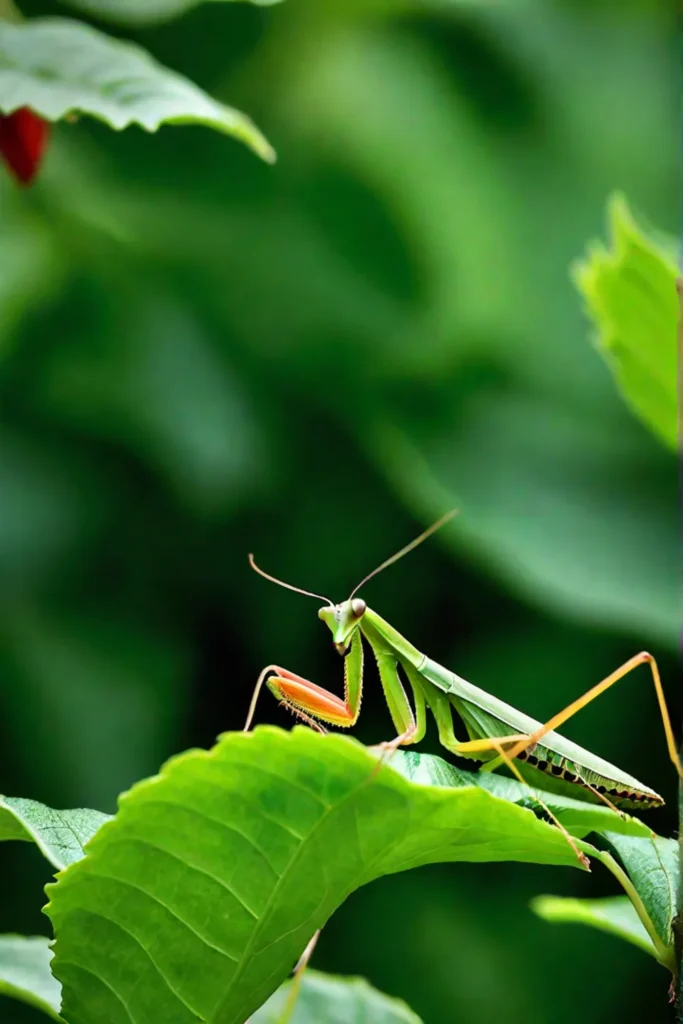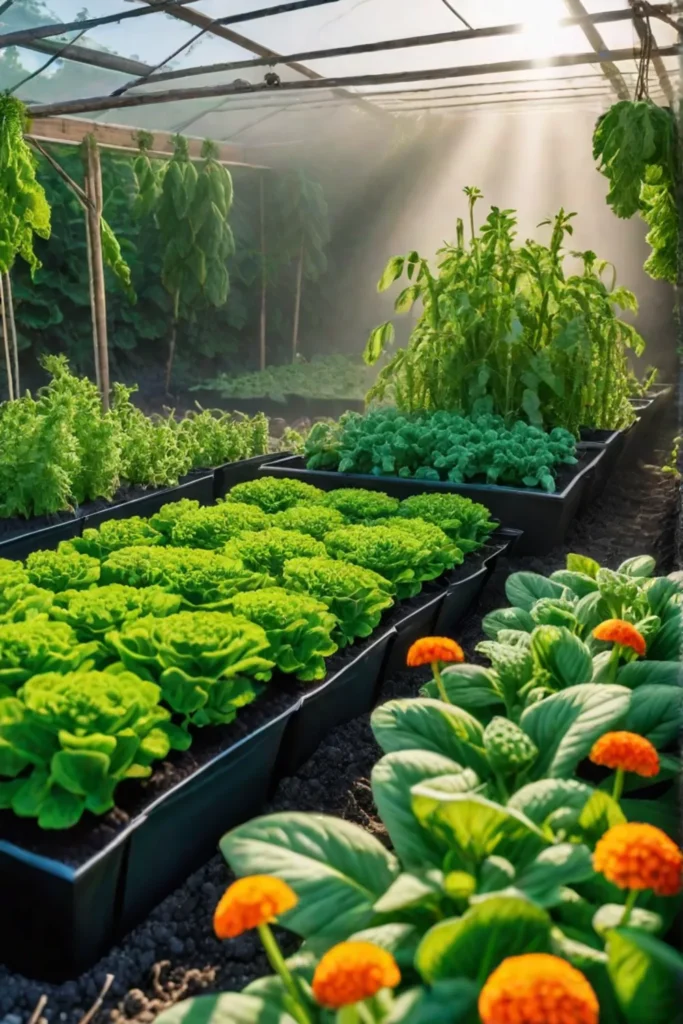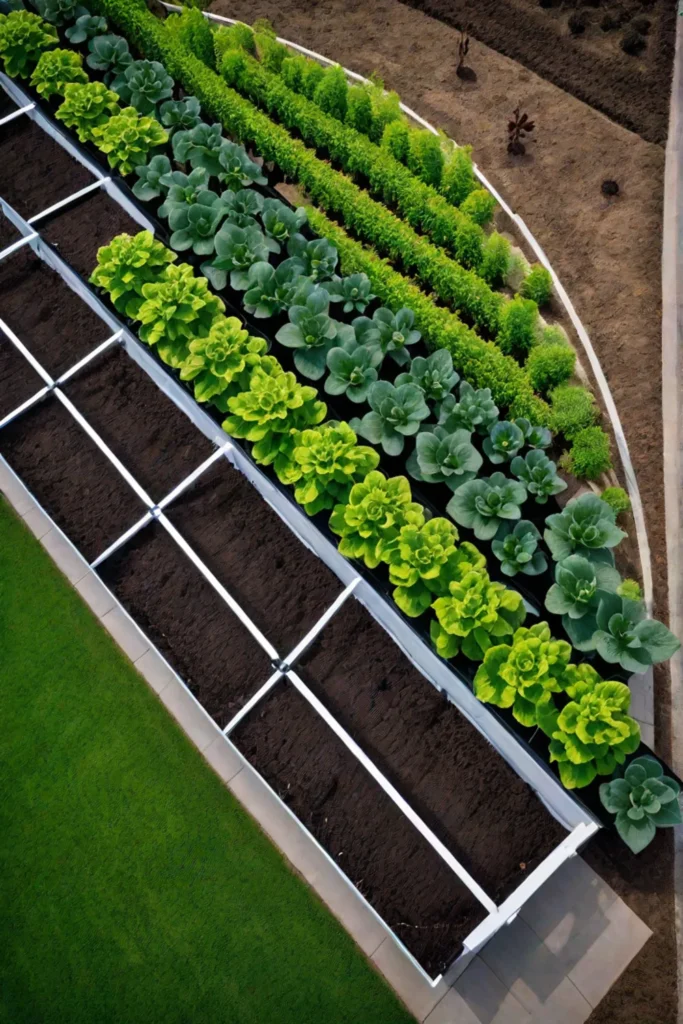Imagine strolling through your lush, thriving vegetable garden, admiring the vibrant colors and healthy plants. But wait, what’s that? You spot a few pesky pests munching away on your precious crops. Sound familiar? As a passionate gardener, I know the frustration of battling unwanted visitors in the garden.
However, I’m here to tell you that you don’t have to resort to harsh chemicals to protect your plants. You can use numerous natural and organic methods to create a true “pest-proof paradise” in your backyard. You can enjoy a bountiful harvest while maintaining a healthy, sustainable garden ecosystem by harnessing the power of beneficial insects, utilizing organic pesticides, embracing companion planting, and implementing physical barriers.

In this article, we’ll explore these strategies, providing you with the knowledge and tools to outsmart garden pests and cultivate the lush, productive vegetable garden of your dreams. So, let’s get started on your journey to a pest-free paradise!
Beneficial Insects
Beneficial insects are your secret weapon when it comes to controlling pests in your vegetable garden. These natural allies are the unsung heroes of the garden, playing a crucial role in maintaining the delicate balance of your ecosystem.
Let’s start by learning some of the most common beneficial insects. Ladybugs, for instance, are voracious predators, capable of consuming up to 50 aphids daily! Lacewings, also known as “aphid lions,” have an equally impressive appetite, with their larvae devouring up to 200 aphids daily. And the praying mantis? This captivating insect is a master of camouflage, patiently waiting to ambush its prey.
But how do you attract and sustain these helpful bugs? The key is to create a diverse, nectar-rich garden that provides them with the food and shelter they need to thrive. Plant a variety of flowering plants, such as marigolds and calendula, which not only deter pests but also attract beneficial insects. And don’t forget to provide a reliable water source, like a shallow dish or birdbath, to keep your new allies hydrated and happy.

By understanding these remarkable creatures’ life cycles and pest-controlling abilities and providing them with the right habitat, you’ll be well on your way to establishing a natural, self-sustaining pest control system in your vegetable garden.
Organic Pesticides
While beneficial insects are your first defense, sometimes you need extra help keeping those pesky pests at bay. That’s where organic pesticides come into play. These natural, plant-derived solutions can be just as effective as their synthetic counterparts but with a much lower risk of harming your garden’s delicate ecosystem.
One of the most versatile organic pesticides is neem oil, derived from the neem tree. This broad-spectrum insecticide can tackle many pests, including aphids, whiteflies, and spider mites, by disrupting their hormone systems and preventing them from reproducing. Another option is insecticidal soap, a simple mixture of water, a mild soap, and sometimes a touch of horticultural oil. This concoction works by breaking down the exoskeletons of soft-bodied insects, causing them to dehydrate and die.

But it’s not just about the pesticides themselves—proper application and timing are key to using them effectively. For example, apply organic pesticides early in the morning or late in the evening to avoid harming beneficial insects, which are more active during the day. Be sure to follow the instructions on the label to ensure you’re using the right amount for your garden’s needs.
By incorporating organic pesticides into your pest control arsenal, you can tackle stubborn infestations without compromising the health of your plants or the delicate balance of your garden ecosystem.
Companion Planting
Companion planting is a natural and time-tested method of pest control that involves the use of beneficial insects and organic pesticides. The concept is simple: by strategically planting certain species together, you can create a harmonious garden ecosystem that deters pests and promotes the overall health of your vegetables.
Take marigolds, for example. Their strong, pungent scent repels nematodes, aphids, and other common garden pests. Planting a border of marigolds around your vegetable beds can help keep those unwanted visitors at bay. Or consider the humble basil—not only does it add delicious flavor to your culinary creations, but it can also help deter aphids, spider mites, and even the dreaded tomato hornworm.

Consider creating a visually appealing and functional arrangement when designing your companion planting layout. Try planting a border of fragrant herbs like lavender or rosemary to create a natural barrier against pests. Or intersperse your vegetables with flowers like nasturtiums and calendula, which attract beneficial insects to help control the bad bugs.
By embracing the power of companion planting, you’ll enjoy a more pest-resistant garden and a more diverse, thriving ecosystem that supports a wide range of beneficial organisms.
Physical Barriers
Sometimes, even with the help of beneficial insects and organic pesticides, you need an extra layer of protection for your precious vegetable plants. That’s where physical barriers come into play – simple yet highly effective solutions to keep pests at bay.
One of the most versatile physical barriers is the humble row cover. These lightweight, breathable fabrics can be draped over your plants, creating a physical barrier that prevents flying insects, such as cabbage moths and cucumber beetles, from accessing your crops. Row covers can increase crop yields by up to 30% by creating a warmer microclimate around your plants.
A sturdy fence is the best option for larger pests like rabbits and deer. Whether you choose a wooden or metal option, a well-installed fence can provide a reliable barrier to keep hungry herbivores out of your garden.

And don’t forget about netting—a lifesaver for delicate crops like berries, which can be vulnerable to bird and insect damage. By draping the appropriate netting over your plants, you can protect your delicious harvest without compromising airflow or sunlight.
Proper installation and maintenance are key to effective physical barriers. Ensure your barriers are securely fastened, and don’t hesitate to remove them periodically for plant maintenance and pest monitoring. With a little diligence, these simple solutions can create a true fortress of protection around your vegetable garden.
Integrated Pest Management
As you’ve seen, there’s no single silver bullet for protecting your vegetable garden from pests. But by combining multiple strategies—from beneficial insects and organic pesticides to companion planting and physical barriers—you can create a comprehensive, sustainable pest control system known as Integrated Pest Management (IPM).
The key to successful IPM is understanding the principles of prevention, monitoring, control, and adaptation. Start by implementing practices that discourage pests, such as crop rotation, using pest-resistant plant varieties, and maintaining a clean garden. Then, regularly monitor your garden to track the populations of both pests and beneficial insects so that you can respond accordingly.

When it comes to control, IPM’s magic shines. By using diverse methods—from attracting ladybugs and lacewings to applying neem oil and installing row covers—you create a multi-layered defense that’s much harder for pests to overcome. As conditions change, be ready to adapt your strategies to ensure long-term success.
Integrating these various pest control techniques might initially seem daunting, but the payoff is well worth it. You will reduce your reliance on harmful chemicals and enjoy a thriving, productive vegetable garden that’s in harmony with the natural world around it.
Conclusion
Ultimately, creating a pest-proof paradise in your vegetable garden is all about embracing nature’s solutions. You can establish a healthy, sustainable ecosystem that keeps those pesky pests at bay by harnessing the power of beneficial insects, utilizing organic pesticides, embracing companion planting, and implementing physical barriers.

Remember, the key is to take an integrated approach, combining multiple strategies for maximum effectiveness. Regularly monitor your garden, adapt your methods as needed, and be patient – building a pest-proof paradise takes time and dedication, but the rewards are bountiful.
So, what are you waiting for? It’s time to roll up your sleeves and get to work on your very own pest-proof paradise. With a little effort and a lot of natural know-how, you’ll enjoy a thriving, bountiful vegetable garden in no time. Happy gardening!






